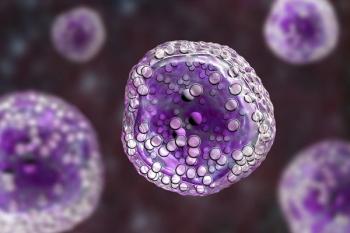
Ensuring Quality of Life in Chronic Myeloid Leukemia Populations
Those with CML should discuss adverse effects such as nausea or fatigue with their providers to help optimize their quality of life during treatment.
When assessing a treatment course for patients with chronic myeloid leukemia (CML), clinicians should aim to maintain long-term patient quality of life by limiting the number of symptoms and adverse effects (AEs) they have during their therapy, according to Claire Saxton, MBA.
Saxton, the executive vice president of Insights and Impact at Cancer Support Community, spoke with CancerNetwork® at the
Saxton highlighted how patients should openly communicate with their providers about any toxicities that may impact their quality of life during treatment. For example, patients should inform their treatment team about any experiences related to AEs such as fatigue or diarrhea, which can affect their ability to participate in personal activities or use public transportation.
According to Saxton, discussing these toxicities allows providers to better understand the patient’s perspective on how much their daily routine changes due to treatment for CML. As a result of these conversations, providers may then be able to adjust the treatment course to help improve patient’s quality of life.
Transcript:
In the long term, the treatment journey is [about] keeping [patients from] having as few symptoms and AEs and [ensuring] as good a quality of life as possible. [Patients should] be clear with [their] treatment team: "My fatigue means that I can’t do some of my favorite things. The fact that I have diarrhea means that I can’t take the bus to work anymore."
When [patients] put things in the perspective of how [CML is] affecting [their] everyday life, the treatment team will be much better able to make sure that whatever treatment that [they are] on is the one that is giving [them] the best quality of life.
Newsletter
Stay up to date on recent advances in the multidisciplinary approach to cancer.


















































































